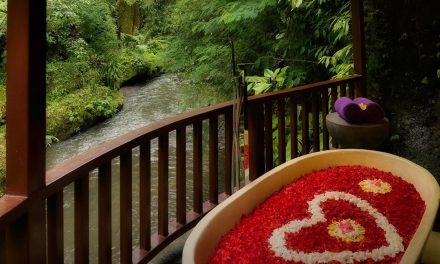When you think about Bali, the first images that come to mind are probably stunning beaches, lush rice terraces, and the breathtaking views from Ubud. However, nestled amidst the beauty of this serene town is a vibrant cultural tapestry expressed through traditional dance. And no dance in Ubud is complete without the extravagant costumes and attire that tell stories as much as the performers do. Having spent time in Ubud, I vividly remember wandering through the town and stumbling upon an impromptu dance performance one evening. The moment the dancers took the stage, I was mesmerized not only by their movements but also by the rich colors and intricate details of their costumes. It was as if I was looking at living art! Join me as we dive deeper into the enchanting world of Ubud’s traditional dance costumes and attire.
The Essence of Ubud Traditional Dance
Ubud is renowned for its traditional Balinese dance, a form of art deeply rooted in religious rituals and cultural heritage. Each dance has its own unique story, often depicting epic tales from the Ramayana or local folklore. Costumes play an integral role in conveying these tales. They are not merely clothing; they’re a vital part of the storytelling process, enhancing the audience’s experience and connecting past traditions with present performances.
The Components of Dancer’s Attire
1. Barong and Keris: In many dances, you’ll see characters representing mythical creatures like the Barong, a lion-like figure. The intricate mask and costume embody the character and its significance within the narrative. I remember watching a Barong dance and being in awe of the vibrant materials used – golden fabrics that shimmered under the stage lights and elaborate headpieces that seemed to defy gravity!
2. Kebaya and Kain: For female dancers, the kebaya (a traditional blouse) paired with a kain (a wrap-around skirt) creates a beautiful silhouette that enhances their grace. The kebaya is often adorned with intricate lacework and vibrant colors, showcasing the skill and artistry of the craftsmen who create them. One night, as I watched a Legong dance, the dancer’s flowing kebaya was mesmerizing. The way it moved with her with each graceful step told stories of its own.
3. Accessories: No costume is complete without accessories. From elaborate headdresses to intricate jewelry, every piece is symbolic. I once had the chance to try on a dancer’s headdress made of fresh flowers and gilded ornaments, and I felt like royalty for a moment! These accessories are not just decorative; they often signify the character being portrayed and enhance the overall visual storytelling.
Color and Symbolism
The colors used in Ubud traditional dance costumes are not random; they hold deep meanings. For example, red often symbolizes strength and courage, while black represents the mystical and the unknown. As you watch different performances, try to notice how the colors of the costumes relate to the character’s role and the story being told. It adds another layer of appreciation to the artistry involved.
Personal Anecdote: My Dance Class Experience
During my time in Ubud, I took a traditional dance class. Armed with a rental sarong and a borrowed kebaya, I felt both nervous and excited. The teacher, a graceful dancer herself, explained the significance of the attire before we even started moving. As I donned a costume, I could feel the weight of tradition on my shoulders—it was like stepping back in time, connecting with the generations of dancers who had come before me.
As we danced, I noticed how the fabric swirled and moved, enhancing my every step. The experience was transformative; I understood that the costumes weren’t just beautiful—they carried the essence of the culture. By the end of the class, I had a new-found respect for these performers who spend years mastering not just the dance and its movements but also the significance behind every piece of their attire.
Practical Insights for Visitors
If you’re planning to visit Ubud and want to immerse yourself in this dance culture, here are a few practical tips:
– Dress Code: If you plan to watch a performance, it’s respectful to dress modestly and perhaps even consider wearing a sarong. Sometimes, venues offer sarongs to loan out as part of the entry fee.
– Take a Class: Consider joining a dance class. Many studios offer short tutorials, and you’ll not only learn about the dance but also get to try on traditional costumes yourself—an experience you won’t forget!
– Photography: If you’re keen on photography, be mindful of the performers. Always ask for permission before snapping photos, especially of children, and be respectful of the sacredness of the event.
– Cultural Respect: Remember, these dances are often performed as part of religious ceremonies. Approach them with respect and an open heart, celebrating the artistry and the stories they convey.
Conclusion
Ubud’s traditional dance costumes and attire are much more than just clothing; they are spectacular glimpses into a rich cultural heritage. From the majestic Barong masks to the elegant kebayas, every element contributes to the vibrant storytelling that has captivated audiences for centuries. Next time you find yourself in Ubud, take a moment to appreciate the spectacle of these dances. And who knows? You just might feel inspired to put on a costume and join a class, stepping into the shoes of those who have danced these stories for generations. Embrace the colors, the stories, and the spirit of Ubud—you won’t regret it!






